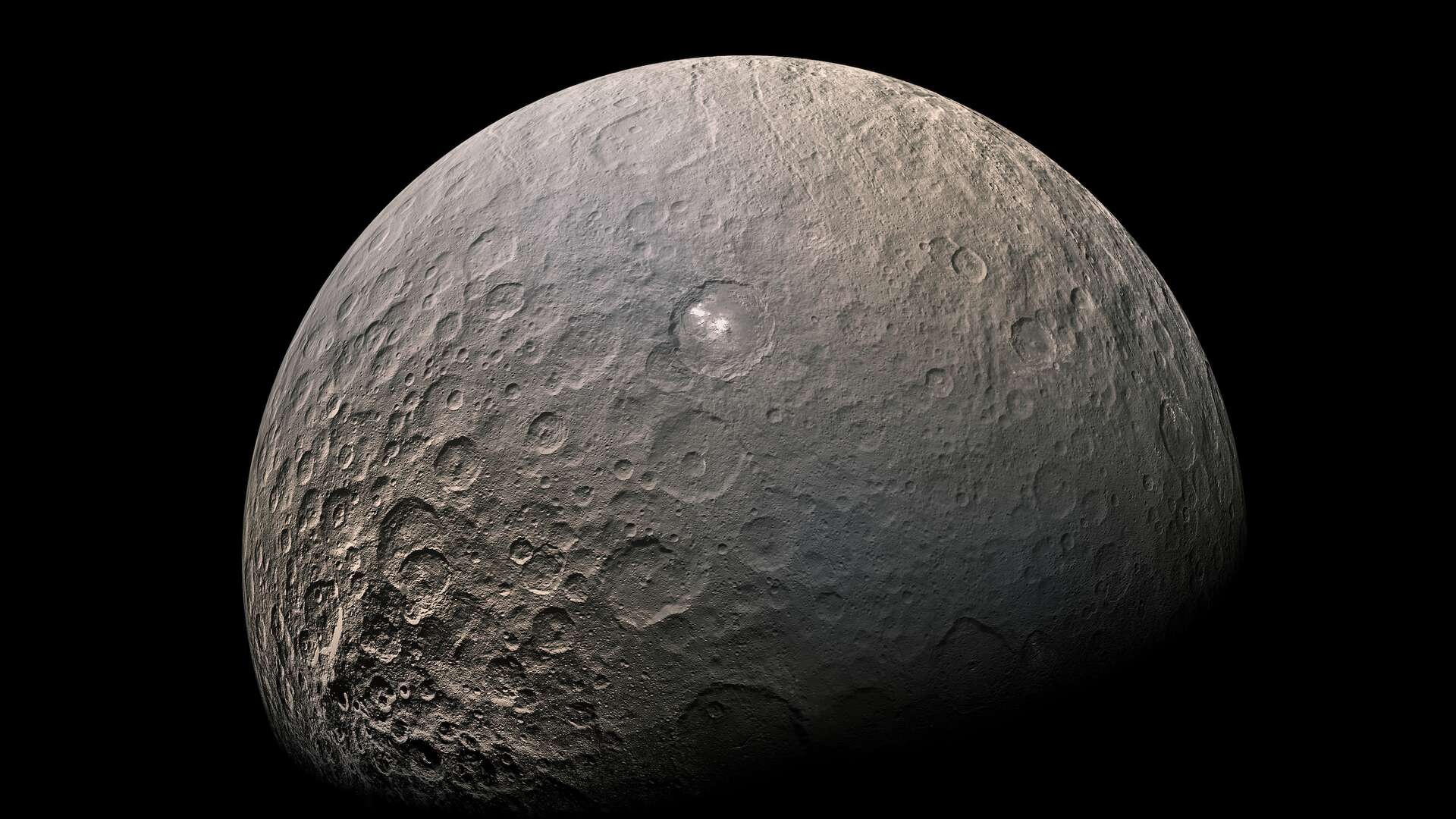The flyby of Ceres, the largest body in the asteroid belt, between Mars and Jupiter, by the Dawn probe, made it possible to detect the presence of complex organic molecules there. Knowing that the dwarf planet may have previously hosted an ocean of liquid water, scientists believe that it may have once had conditions favorable for the emergence of life. The origin of these organic molecules found on Ceres’ surface is the subject of much research.
This will interest you too
[EN VIDÉO] Ceres: Discover the dwarf planet in 360 degrees The dwarf planet closest to us, Ceres, has many white spots…
On the border between the inner solar system and the outer solar system, between the orbits of Mars and Jupiter, billions of small celestial bodies orbit, the sizes of which can vary from millimeters to kilometers. They form the main belt, or asteroid belt, which was formed about 4.6 billion years ago by asteroids that did not coalesce to form planets. But there is one main belt object that clearly stands out from the others, particularly in terms of its size: Ceres, the only dwarf planet in the main belt. With a radius of about 476 km, Ceres alone accounts for nearly a third of the main belt’s mass. It has a large amount of water ice on its surface, and is also the only spherical body in the asteroid belt.
The dwarf planet was discovered in 1801, and has recently been the subject of many studies, because scientists believe that it is a protoplanet, and still retains its characteristics unchanged since the formation of our solar system. Scientists’ curiosity about this celestial body has increased since the discovery of the presence of moist materials on its surface, which indicates the presence of a large amount of water in its interior, and the possibility of the existence of an underground ocean.
Detection of on-site observations
In order to uncover the mysteries of the dwarf planet, NASA launched its Dawn probe in 2007, designed to closely monitor Ceres as well as the asteroid Vesta, which is also developing in the asteroid belt. The probe is specially equipped with a spectrograph, which makes it possible to determine the chemical composition of surfaces observed remotely. The main goal of the probe was to help understand the processes occurring during the formation of the solar system.
After observing the asteroid Vesta, the probe moved towards Ceres, around which it placed itself in orbit in 2015. Observations of the dwarf planet led to surprising results: the probe discovered on the surface of Ceres the presence of complex organic molecules. . Combined with the idea that the dwarf planet could harbor an ocean world within it, these findings suggest that Ceres may have harbored the ingredients needed for life as we know it to arise. The Dawn probe is no longer active today, and has become a “passive” satellite of Ceres.
The origin of these organic compounds is still a matter of debate
Organic compounds discovered on Ceres’ surface are called aliphatic: they are hydrocarbons (composed only of hydrogen and carbon atoms), and have carbon chains with linear structures (for example, methane). Since its discovery in 2017, its causes on the dwarf planet have been the subject of numerous research and hypotheses, resulting in two generally distinct schools.
Some scientists believe that these compounds arrived on Ceres by collisions with comets or other celestial bodies rich in organic compounds, while others suggest that they were formed by the alteration of initially existing compounds by salt water. In any case, given the numerous impacts that the dwarf planet has experienced (and continues to experience), it is very likely that the evolution of these organic molecules on the surface of Ceres is closely related to the almost ubiquitous impacts that have shaped its surface, especially since compounds have been found The first organic matter discovered near the impact crater.
The result of several operations?
But a recent study presented on October 17 in Geological Society of America (GSA), tends to show that the emergence of these organic molecules would in fact be the result of several distinct processes and phenomena, confounding the two main hypotheses mentioned previously. In order to determine the origin of these organic compounds, the researchers combined data collected by the spectrometer and that measured by the camera on board the probe, which allowed them to draw an accurate map of the presence of organic compounds on the surface of the planet. Dwarf planet. At the same time, they simulated typical impact conditions for Ceres, with impact velocities ranging from 2 to 6 km/s and impact angles ranging from 15 to 90 degrees from the horizontal.
Their results therefore indicate a strong spatial relationship between the presence of organic compounds and the location of impact structures, as well as between the presence of organic compounds and the presence of minerals, such as carbonates, which attest to the presence of water. Although the origin of these compounds is still poorly understood, scientists are confident that a large part of the origin is internal: they estimate that these organic compounds could have formed on Ceres, perhaps thanks to the presence of water. This conclusion indicates the plausible presence of a large reserve of organic compounds in the bowels of the dwarf planet, stimulating interest in the search for extraterrestrial life.

“Hardcore beer fanatic. Falls down a lot. Professional coffee fan. Music ninja.”







More Stories
Artificial Intelligence is coming to WhatsApp – here's everything you can do with it
What is the first tool you use to search for information on the Internet?
He scanned his brain when he was two years old: the “stairs” of life